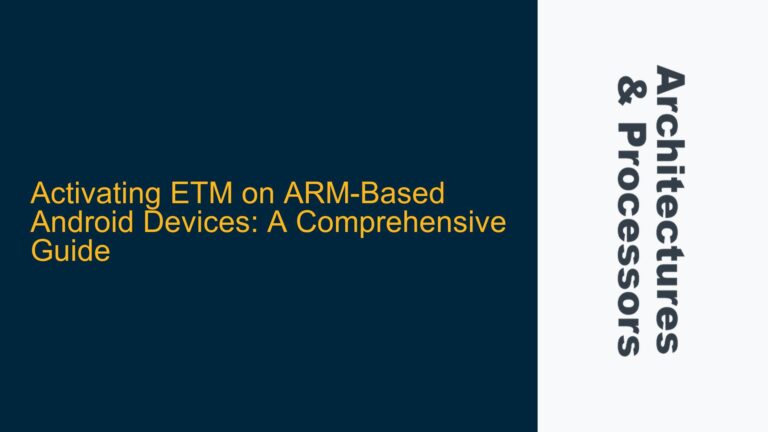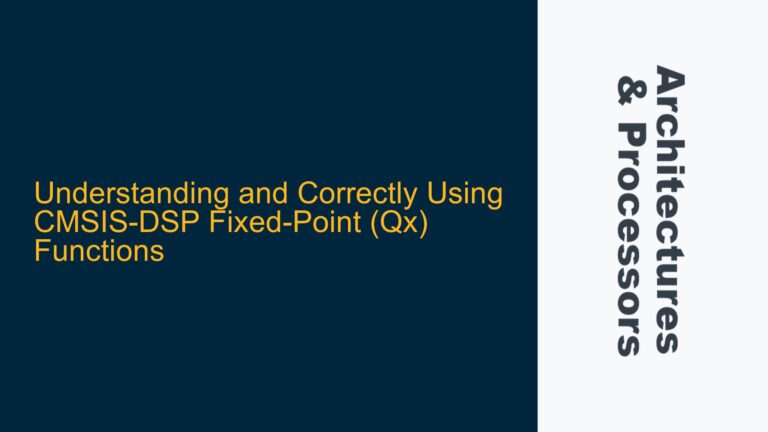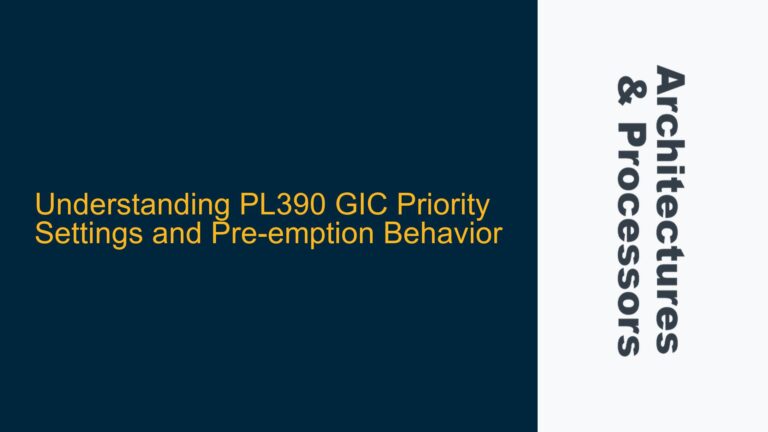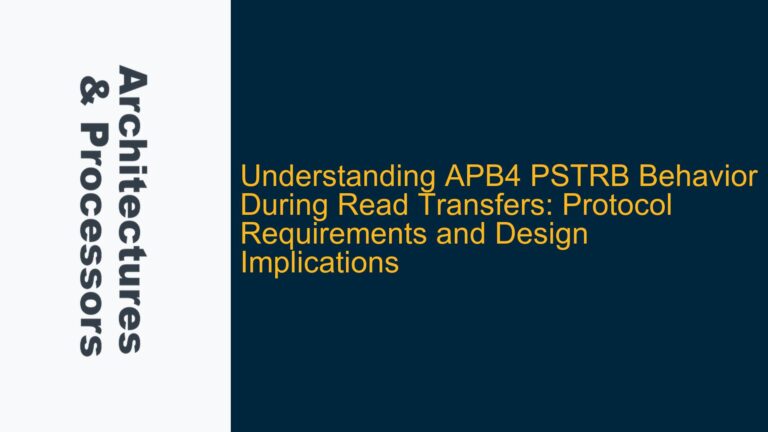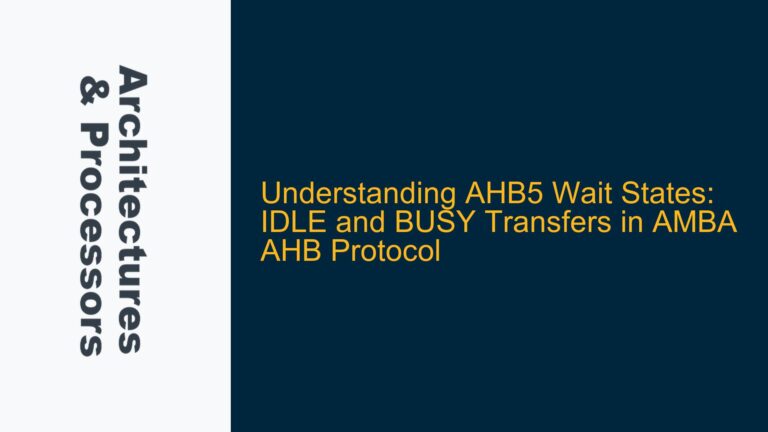ARM Cortex-M4 Interrupt Handling Failure During Debug Single-Stepping
When debugging an ARM Cortex-M4 microcontroller, a critical issue arises where interrupts, including PendSV, are not being processed as expected during single-stepping. The Cortex-M4 core exhibits a state where PRIMASK is cleared (indicating global interrupt enable), ICSR shows both an ISR and PendSV as pending, and DHCSR confirms that C_MASKINTS is cleared (allowing interrupts during debugging). Despite these configurations, the CPU fails to enter any interrupt handler during single-stepping. Instead, it continues executing the normal instruction flow. Additionally, the VECTPENDING field in ICSR reports a value of 0xA, which corresponds to a reserved interrupt according to ARM documentation. This behavior prevents the embedded OS from functioning correctly, as task switching and sleep points are ignored due to the PendSV handler not being invoked.
The Cortex-M4’s interrupt handling mechanism relies on the NVIC (Nested Vectored Interrupt Controller) to prioritize and manage interrupts. During single-stepping, the debugger typically halts the CPU after each instruction, allowing the developer to inspect the system state. However, this halting behavior can interfere with the normal operation of the NVIC, particularly when interrupts are pending. The reserved VECTPENDING value further complicates the issue, suggesting a potential misconfiguration or hardware anomaly in the NVIC or related subsystems.
PRIMASK and ICSR Misconfiguration and Reserved VECTPENDING Value
The root cause of the interrupt handling failure during single-stepping can be attributed to several factors, including misconfigurations in the PRIMASK and ICSR registers, as well as the unexpected reserved VECTPENDING value. PRIMASK is a key register that controls the global interrupt enable state. When PRIMASK is cleared, interrupts are globally enabled, allowing the NVIC to process pending interrupts. However, during single-stepping, the debugger’s halting mechanism can introduce timing issues that prevent the NVIC from correctly prioritizing and handling interrupts.
The ICSR (Interrupt Control and State Register) provides critical information about the current interrupt state, including pending interrupts and the VECTPENDING field. In this case, ICSR reports a value of 0x10C4A000, indicating that both an ISR and PendSV are pending. However, the VECTPENDING field shows a value of 0xA, which is reserved according to ARM documentation. This reserved value suggests a potential corruption or misalignment in the NVIC’s internal state, possibly caused by an unhandled exception or a race condition during single-stepping.
Another contributing factor is the interaction between the debugger and the Cortex-M4’s debug logic. The DHCSR (Debug Halting Control and Status Register) includes the C_MASKINTS bit, which controls whether interrupts are masked during debugging. When C_MASKINTS is cleared, interrupts should be processed as normal, even during single-stepping. However, the debugger’s halting behavior can introduce delays that disrupt the NVIC’s ability to handle interrupts promptly, leading to the observed failure.
Resolving Interrupt Handling Issues and Reserved VECTPENDING Anomalies
To address the interrupt handling failure and reserved VECTPENDING value during single-stepping, a systematic approach is required to identify and resolve the underlying issues. The first step is to verify the configuration of the PRIMASK, ICSR, and DHCSR registers. Ensure that PRIMASK is cleared to enable global interrupts, and confirm that C_MASKINTS is cleared in DHCSR to allow interrupt processing during debugging. Additionally, inspect the ICSR to verify the pending interrupt state and the VECTPENDING field.
If the reserved VECTPENDING value persists, it may indicate a deeper issue with the NVIC or the Cortex-M4’s exception handling mechanism. In such cases, it is essential to review the system’s exception table and ensure that all exception handlers are correctly defined and aligned. A misaligned exception table can cause the NVIC to misinterpret interrupt vectors, leading to unexpected behavior such as reserved VECTPENDING values.
Another critical step is to examine the debugger’s configuration and behavior. Some debuggers introduce additional latency or overhead during single-stepping, which can interfere with the NVIC’s ability to process interrupts. Adjusting the debugger’s settings, such as reducing the halt delay or enabling real-time interrupt processing, may help mitigate these issues. Additionally, consider using hardware breakpoints instead of single-stepping to minimize the impact on the CPU’s normal operation.
If the issue persists, it may be necessary to investigate potential hardware anomalies or errata related to the Cortex-M4 core. ARM periodically releases errata documents that detail known issues and recommended workarounds for specific processor revisions. Reviewing these documents can provide valuable insights into potential hardware-related causes and solutions.
Finally, consider implementing a software-based workaround to ensure that critical interrupts, such as PendSV, are processed correctly. This may involve adding explicit checks in the code to detect pending interrupts and manually invoking the corresponding handlers if necessary. While this approach introduces additional overhead, it can provide a temporary solution while the root cause is being investigated.
By systematically addressing the configuration, debugger behavior, and potential hardware issues, it is possible to resolve the interrupt handling failure and reserved VECTPENDING anomalies during single-stepping on the Cortex-M4. This ensures that the embedded OS functions correctly, enabling task switching and sleep points to operate as intended.

